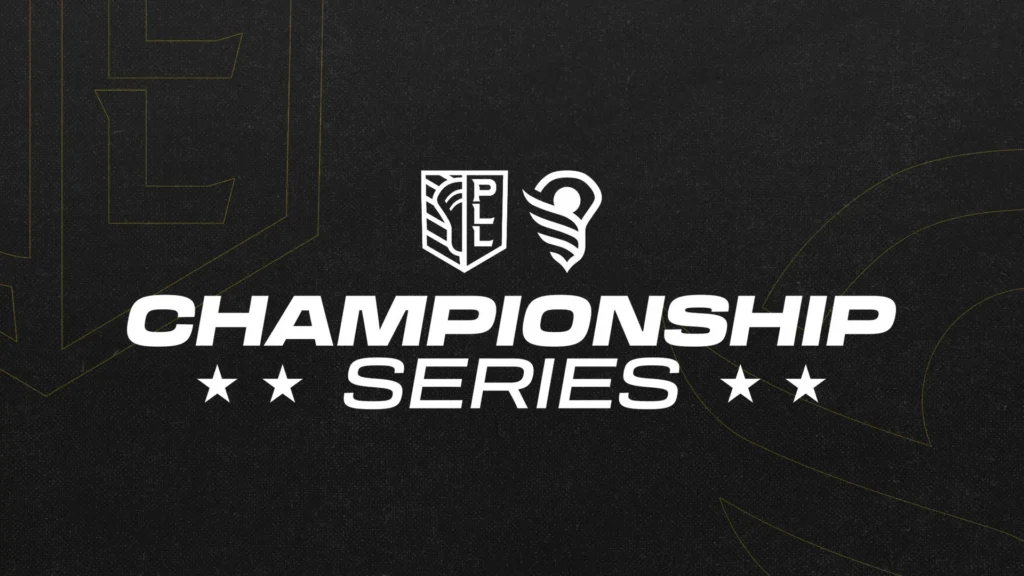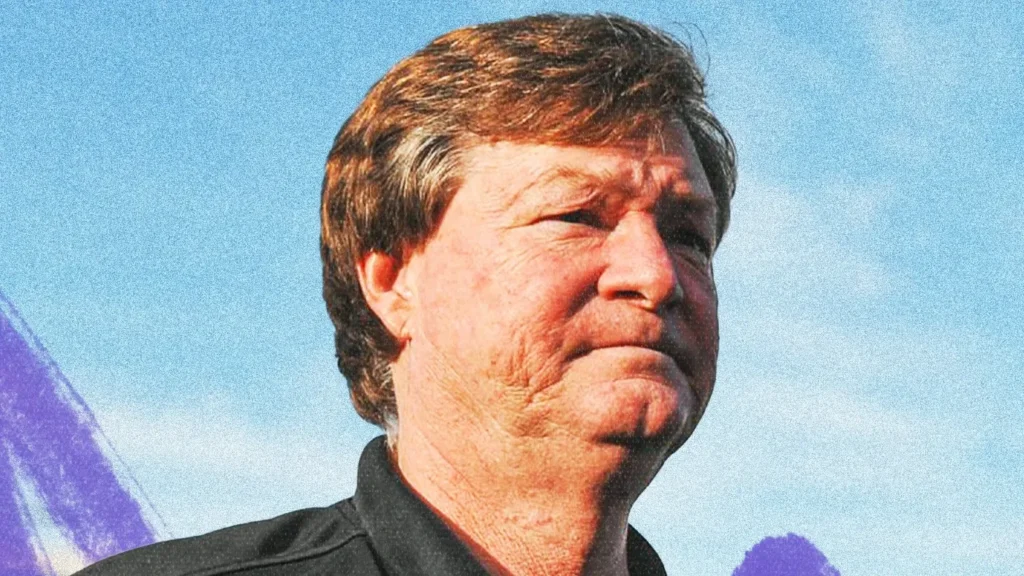
Redrafting the 2024 PLL College Draft
By Zach Carey | Apr 7, 2025
With the 2025 PLL College Draft less than a month away, I’m taking a look back at the greatest draft class by redrafting the 2024 College Draft.
I approached this exercise as going back in time a year knowing only how each of these rookies performed in their first season. I didn’t consider any other context surrounding each club. For instance, Rob Pannell signing with the Maryland Whipsnakes this offseason wasn’t a consideration. Neither was the Boston Cannons trading for Owen Grant, nor any other transactions during or after the 2024 season. This is how I would redraft this class, not necessarily how I think each club would. A number of these teams would be inclined to redraft their own guys, but I’m not as loyal or burdened by being in these locker rooms.
So, without further ado, here’s how I’d redraft the first two rounds of the 2024 College Draft:
No. 1: Denver Outlaws - Brennan O’Neill (originally drafted No. 1 by Denver)
O’Neill was the best prospect in the 2024 College Draft, and nothing about his rookie season changed that. As the No. 1 option on Denver’s offense from Day 1, O’Neill made an instant impact and brought the Outlaws back to contention as a rookie.
He finished the regular season tied for 11th in points, highlighted by an insane nine-point performance (including the overtime game-winner) against the Utah Archers in his second career game. O’Neill still goes confusingly quiet occasionally. But he is one of the most unguardable players in the game, and his selection at first overall is a no-brainer.
No. 2: New York Atlas - Connor Shellenberger (originally drafted No. 2 by New York)
Like O’Neill is still the obvious No. 1 in the 2024 draft, Shellenberger is still the clear-cut No. 2. While minor injuries slightly limited his impact as a rookie, his 26 points in eight games were good for 15th in the league. Shellenberger was the perfect player to pair with Jeff Teat last May, and he still is as one of the cornerstones of New York’s potent offense.
No. 3: Maryland Whipsnakes - Ajax Zappitello (originally drafted No. 3 by Maryland)
I labored over this pick. With Zappitello and TJ Malone, Jim Stagnitta landed two alphas in last year’s draft. Malone – who fell to the Whips at pick No. 17 – was responsible for revamping Maryland’s offense and taking the onus off Matt Rambo and Zed Williams. Zappitello, meanwhile, proved himself as one of the few defenders who could match feet with the quickest attackmen in the league, such as Shellenberger and Michael Sowers.
This decision came down to game theory. There were only two close defenders from this class who played at a consistently high level as rookies, and Zappitello was one of them. I believe Stagnitta would pick Zappitello again if given the choice, even if it means surely losing out on selecting Malone.
No. 4: Carolina Chaos - TJ Malone (originally drafted No. 17 by Maryland)
The Chaos are the biggest winners of this redraft because they pick up the Rookie of the Year at pick No. 4 to bolster what was the worst offense in the league in 2024.
Frankly, the ROY falling this far is a bit nuts. That’s just the reality of the greatest draft, though. Malone’s arrival in Carolina would have given the Chaos a fantastic presence behind the goal as a two-handed player who could make life easier for Josh Byrne (like he did Rambo and Williams) and create looks for the Chaos’ complementary pieces.
No. 5: New York Atlas - Liam Entenmann (originally drafted No. 5 by New York)
The first five picks of this redraft are awfully chalky, I’m aware. Entenmann is already a bona fide top-four goalie in the league. In other classes, he’s probably a top-two pick. So, I’ve got the Atlas and Entenmann staying together, underscoring just how good Mike Pressler’s picks were last May.
No. 6: Boston Cannons - Mason Woodward (originally drafted No. 8 by Utah)
The Pat Kavanagh experiment didn’t work out in Boston since he couldn’t fit into an offense that already had two elite righty attackmen in Asher Nolting and Marcus Holman. Lefty attack became the Cannons’ biggest need in 2024. But, with both O’Neill and Malone off the board, I have Boston taking the best available player in Woodward.
The Cannons were already loaded at close defense with Garrett Epple, Jack Kielty, Bryce Young and Cade van Raaphorst. Yet Woodward has close/LSM versatility, meaning he could have made for a lethal combination alongside Ethan Rall in the short term before potentially moving down low as players like Epple and Young enter their 30s.
No. 7: Philadelphia Waterdogs - Pat Kavanagh (originally drafted No. 6 by Boston)
After originally taking Matt Brandau seventh overall, the Waterdogs land Kavanagh in a redraft. Somehow, the two-time Tewaaraton Award winner falls even further this time around, but he joins a team whose 2024 season could have been altered by his presence. Alongside Sowers and Kieran McArdle, Kavanagh could have been a wonderful foil as another versatile dodger who’s capable of playing well off others.
No. 8: Utah Archers - Beau Pederson (originally drafted No. 13 by Utah)
With their defensive stud Woodward going off the board two picks too early, the Archers take Pederson five picks earlier than they did back in 2024. Utah entered the draft with three needs: a pole (preferably who could play close), a shorty and a lefty offensive threat.
Pederson is the best player left on the board who fits one of those molds. As a rookie, he was already one of the best shorties in the league with the size to win in close and the length to run with speedsters. Plus, he can make plays in transition. His end-to-end goal against the Outlaws in Salt Lake City was one of the defining moments of the Archers’ second consecutive title run.
No. 9: Denver Outlaws - Tyler Carpenter (originally drafted No. 26 by New York)
Denver needed a pole last May and, with the benefit of hindsight, they nab the 2024 LSM of the Year ninth overall by taking Carpenter. Carpenter was a menace in the middle of the field as a rookie, scoring seven points, picking up 41 ground balls and becoming the first LSMOY not named Michael Ehrhardt.
No. 10: New York Atlas - Graham Bundy Jr. (originally drafted No. 11 by Denver)
After Denver steals one of New York’s star rookies, the Atlas get back at them by drafting Bundy to further bolster an elite offense. Bundy scored 23 points (fourth among midfielders) and six two-pointers (second in the league) as a rookie. Adding him to an offense with feeders like Shellenberger and Teat would be a deadly prospect for opposing defenses.
No. 11: Denver Outlaws - Shane Knobloch (originally drafted No. 4 by Carolina)
The Outlaws originally drafted Bundy with this pick. Instead, they capitalize on Knobloch falling to the second round. The Rutgers product had a good rookie season, scoring 15 points in 10 regular-season games, including an overtime game-winner in Fairfield. Knobloch dropping seven spots is much less about his performance and more about how many guys performed like stars as rookies.
No. 12: Carolina Chaos - Josh Zawada (originally drafted No. 19 by Denver)
After getting Malone in the first round, Carolina nabs Zawada in the second to fill out its attack spots alongside Byrne. Following a 16-point rookie season for the Outlaws, Zawada jumps up seven spots in the draft order. Ironically enough, the Chaos recently traded for Zawada, so we’ll get to see how this fit will play out this summer.
No. 13: Utah Archers - Jake Piseno (originally drafted No. 9 by Denver)
Zappitello, Woodward and Carpenter were the top three rookie poles last year. With all of them off the board before Utah comes back up at No. 13, the Archers avoid getting locked out of the defensive market and take Piseno in the second round. That means they most likely bump Cam Wyers down to close full-time with Piseno and Jon Robbins splitting LSM runs.
No. 14: Boston Cannons - Levi Anderson (originally drafted No. 21 by California)
The Cannons’ offense was short a matchup-beating lefty last season. Anderson fills that hole. Anderson could be best out of the box long-term. But his presence as a physical lefty who can win one-versus-one on the wing and play complementary ball alongside Holman and Nolting would make the Boston offense immediately better.
No. 15: Philadelphia Waterdogs - Luke Wierman (originally drafted No. 25 by Denver)
The 2024 season proved that teams need a faceoff specialist, and after the Waterdogs won just 31.8% of their draws last season, they take the best faceoff guy in the 2024 class in Wierman. Wierman won 49.8% as a rookie and added five goals and an assist while only turning the ball over five times.
No. 16: Utah Archers - Adam Poitras (originally drafted No. 27 by Maryland)
Poitras was a revelation for the Whipsnakes in 2024, scoring 13 points in seven games at midfield while also picking up 18 ground balls as a faceoff wing. The Archers needed lefty depth on offense, and they get that plus middle-of-the-field versatility in Poitras, who can both score for himself and work well off others on the lefty wing.






